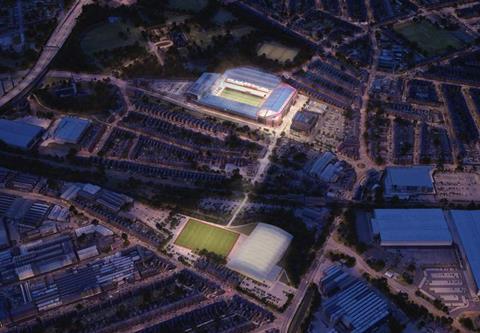Revamp will see Villa Park’s capacity increase to more than 50,000 under plans worked up with Trivandi

Grimshaw and Trivandi’s plans to increase the size of Aston Villa’s stadium to allow it to host major international tournaments have been given the green light.
After approval from Birmingham City Council, the club is set to demolish and replace the existing North Stand at Villa Park, which was built in 1897 as one of England’s larger football stadiums.
The West Midlands Club, which currently stands 12th in the Premier League table, will invest £100m in a replacement stand that will wrap into the existing Trinity Stand, which will itself be enhanced.
The improvements will increase capacity from 42,785 to more than 50,000 and see the Witton Lane entrance and the public space around the North Stand redeveloped, as well as the creation of Villa Live – a new multi-use entertainment, community and retail venue.

The club is working with the West Midlands Combined Authority and West Midlands Rail Executive on a feasibility study to determine what upgrades will be required to ensure the transport system in the area can meet capacity demands.
The project team includes Schlaich Bergermann Partner as structural engineer, WSP as civil engineer and CoreFive as cost consultants.
Aston Villa chief executive Christian Purslow said: “This is great news firstly for our fans – many of whom are on a waiting list for season tickets; secondly for the Club itself – as our long-term competitive strategy depends on continued growth; and finally for our city and region – with the prospect of a redeveloped Villa Park driving economic regeneration in our local community and bringing back international football to Birmingham.”
Potential bidders for the job could include Buckingham, the firm behind the rebuild of Liverpool’s Anfield Road end, McLaren, which has completed new training grounds for Leicester City and Spurs, and McLaughlin & Harvey, which built the main athletics stadium that was used at this summer’s Commonwealth Games in Birmingham.
Work is expected to begin in late 2023, with the aim of completing by the end of 2025.

















No comments yet